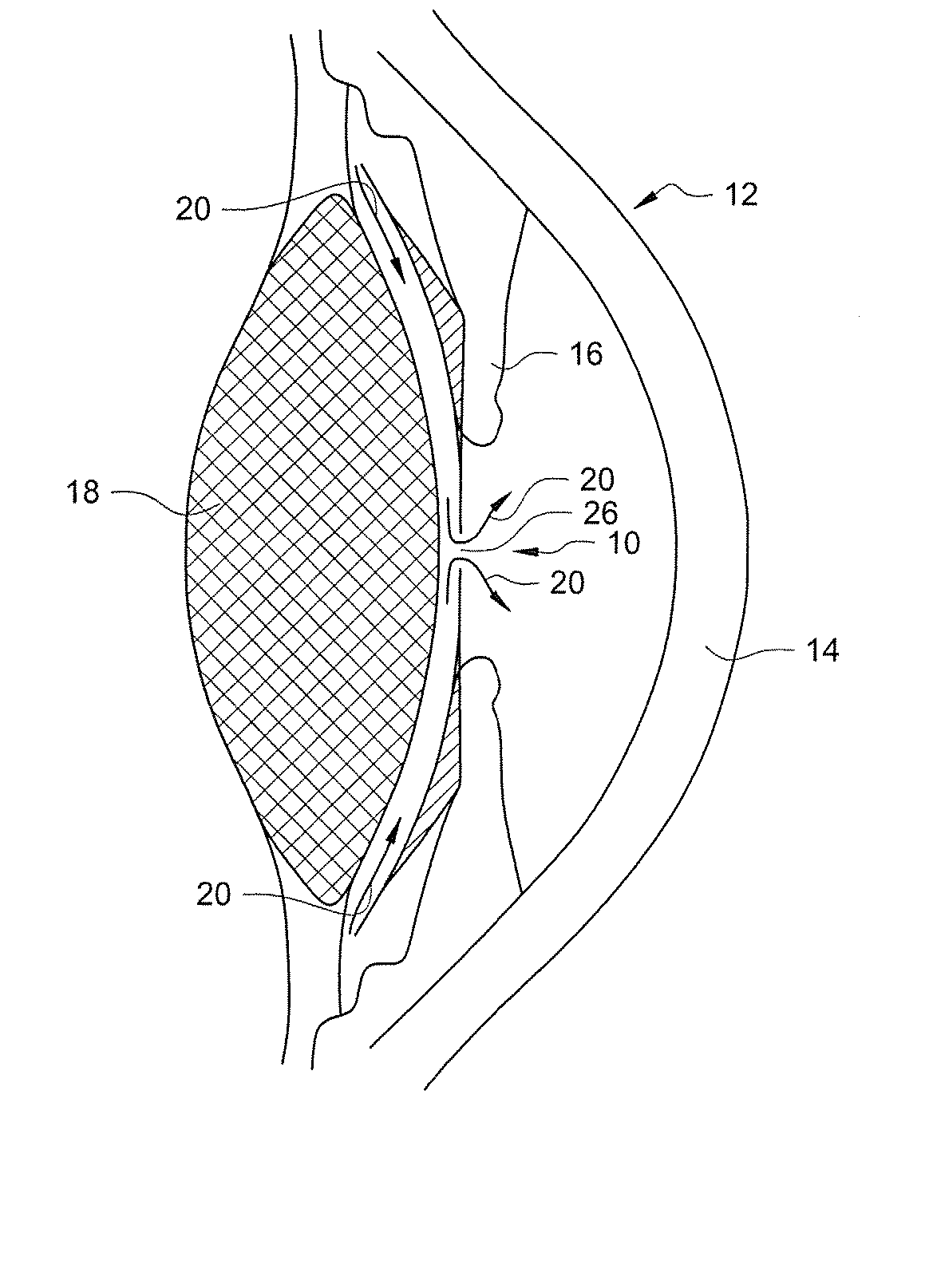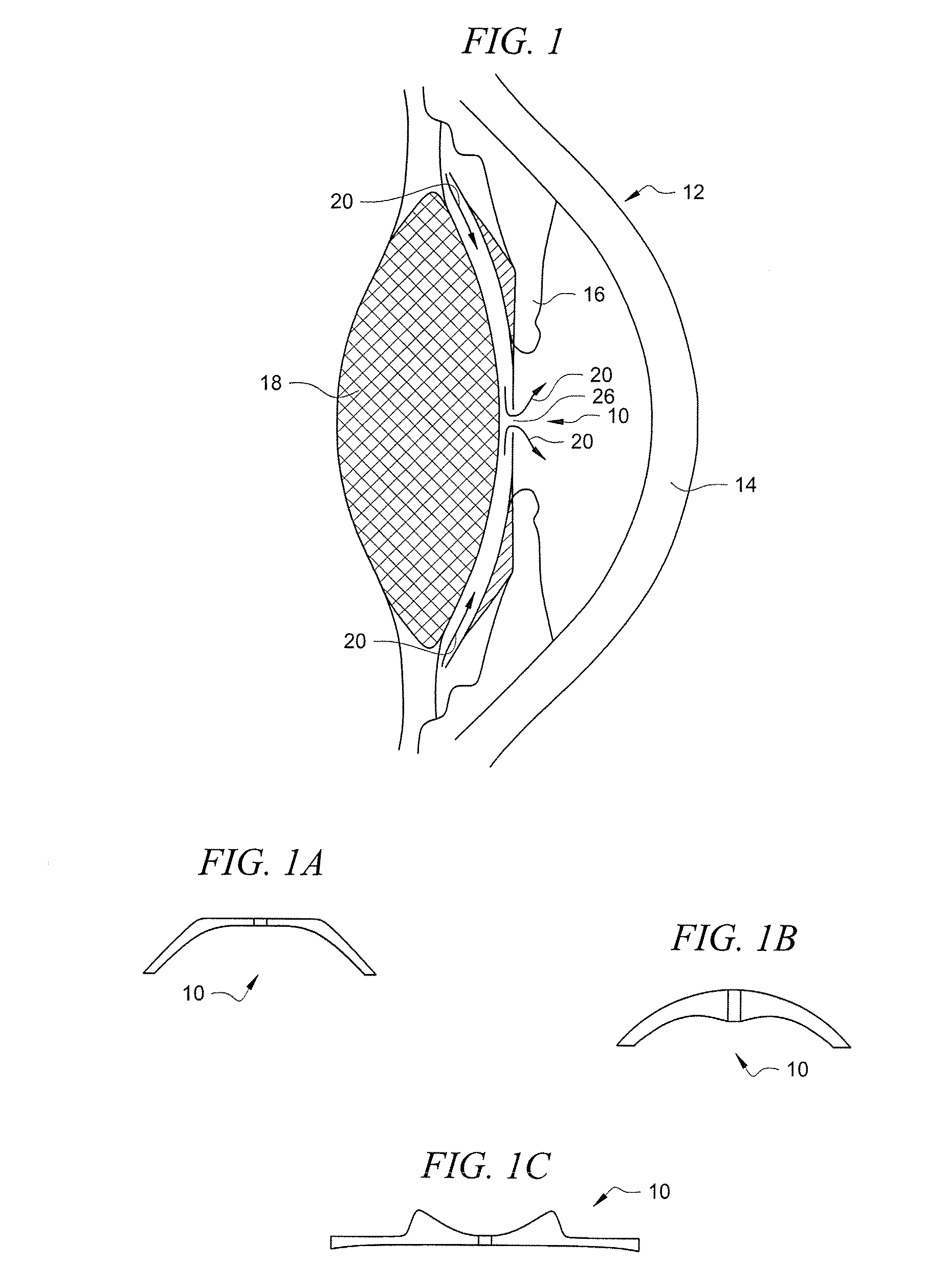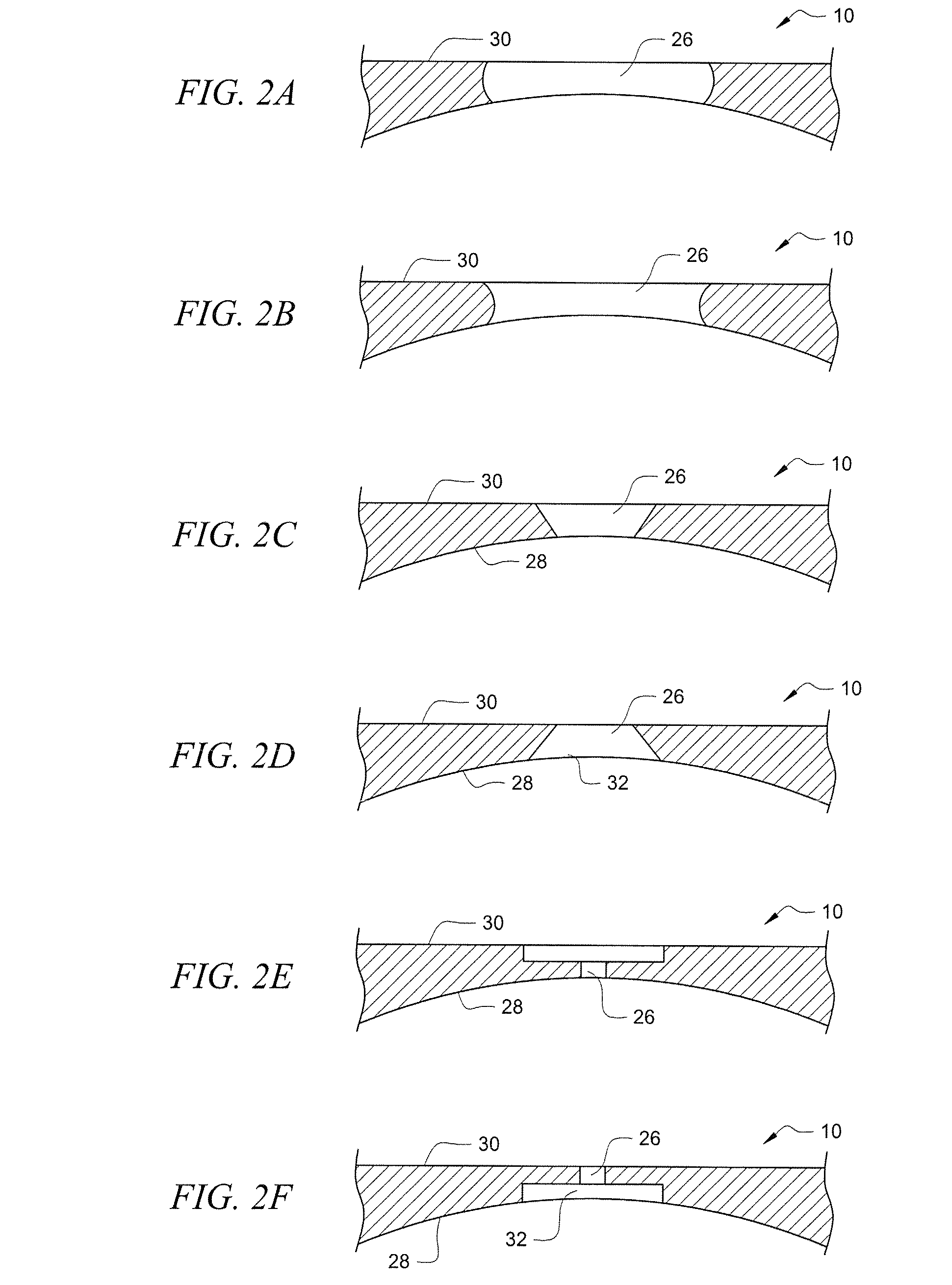Posterior chamber Phakic Intraocular Lens
a phakic intraocular lens and anterior chamber technology, applied in the field of posterior chambers and phakic intraocular lenses, can solve the problems of increased patient recovery time and normal surgical risks
- Summary
- Abstract
- Description
- Claims
- Application Information
AI Technical Summary
Benefits of technology
Problems solved by technology
Method used
Image
Examples
Embodiment Construction
[0019] An exemplary phakic lens 10 is depicted in the posterior chamber of an eye 12 having a cornea 14 and iris 16 and a crystalline lens 18. Lens 10 is implanted between the posterior surface of iris 16 and the anterior surface of crystalline lens 18 is a floating configuration that allows the lens to move within the posterior chamber of eye 12 without being wedged into the outer physical boundaries of the eye or wedged between the iris and crystalline lens.
[0020] Lens 10 is configured to direct a portion of the fluid produced by eye 12 to initially flow directly along the anterior surface of crystalline lens 18 as indicated by the reference line 20. This flow pattern is promoted by the use of an opening 26 in the central portion of lens 10. Fluid flow directly along the anterior surface of crystalline lens 18 is desirable because it mimics the flow the eye before a phakic lens is implanted. Such flow nourishes the eye and may be useful in preventing cataracts. Locating opening 2...
PUM
 Login to View More
Login to View More Abstract
Description
Claims
Application Information
 Login to View More
Login to View More - R&D
- Intellectual Property
- Life Sciences
- Materials
- Tech Scout
- Unparalleled Data Quality
- Higher Quality Content
- 60% Fewer Hallucinations
Browse by: Latest US Patents, China's latest patents, Technical Efficacy Thesaurus, Application Domain, Technology Topic, Popular Technical Reports.
© 2025 PatSnap. All rights reserved.Legal|Privacy policy|Modern Slavery Act Transparency Statement|Sitemap|About US| Contact US: help@patsnap.com



